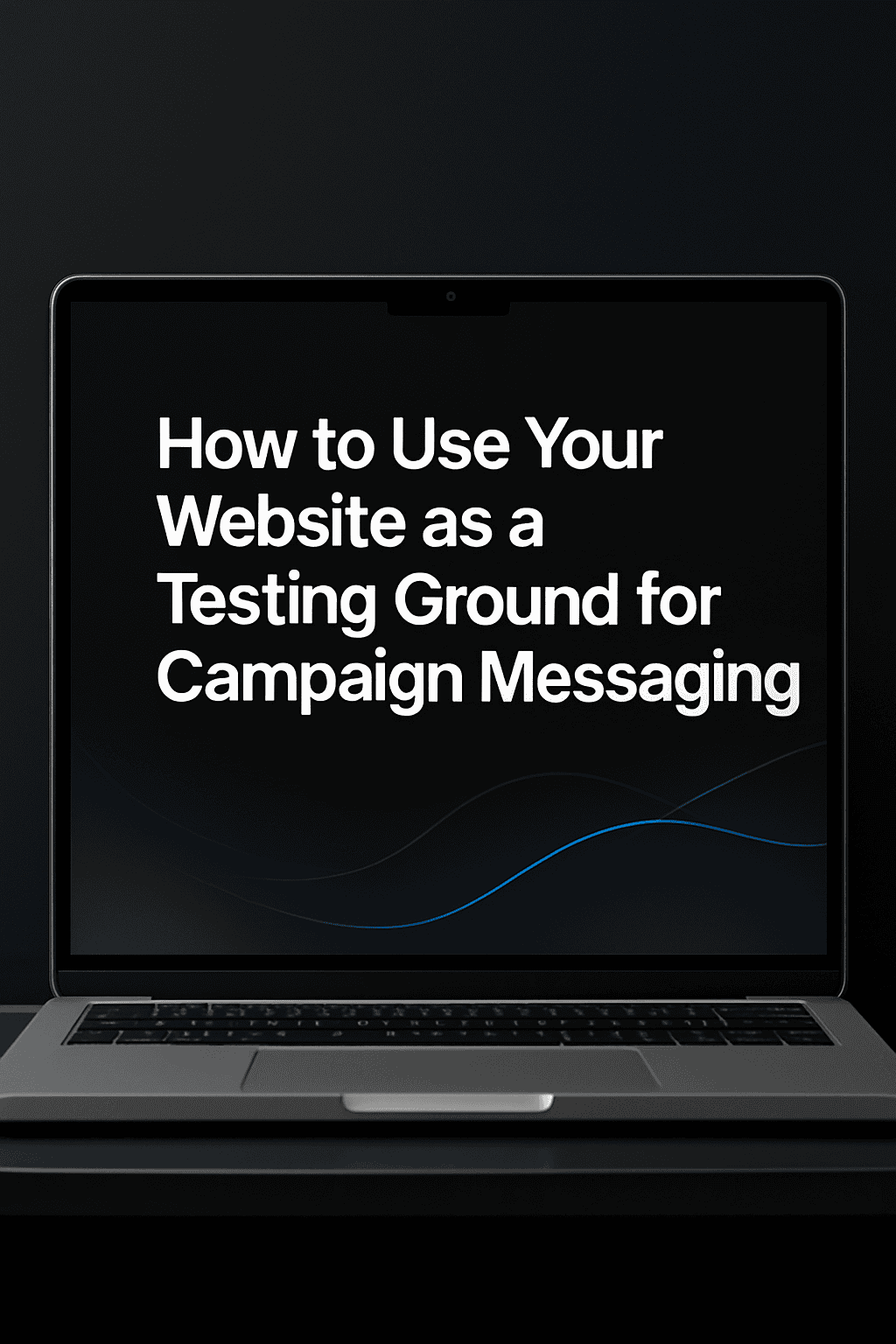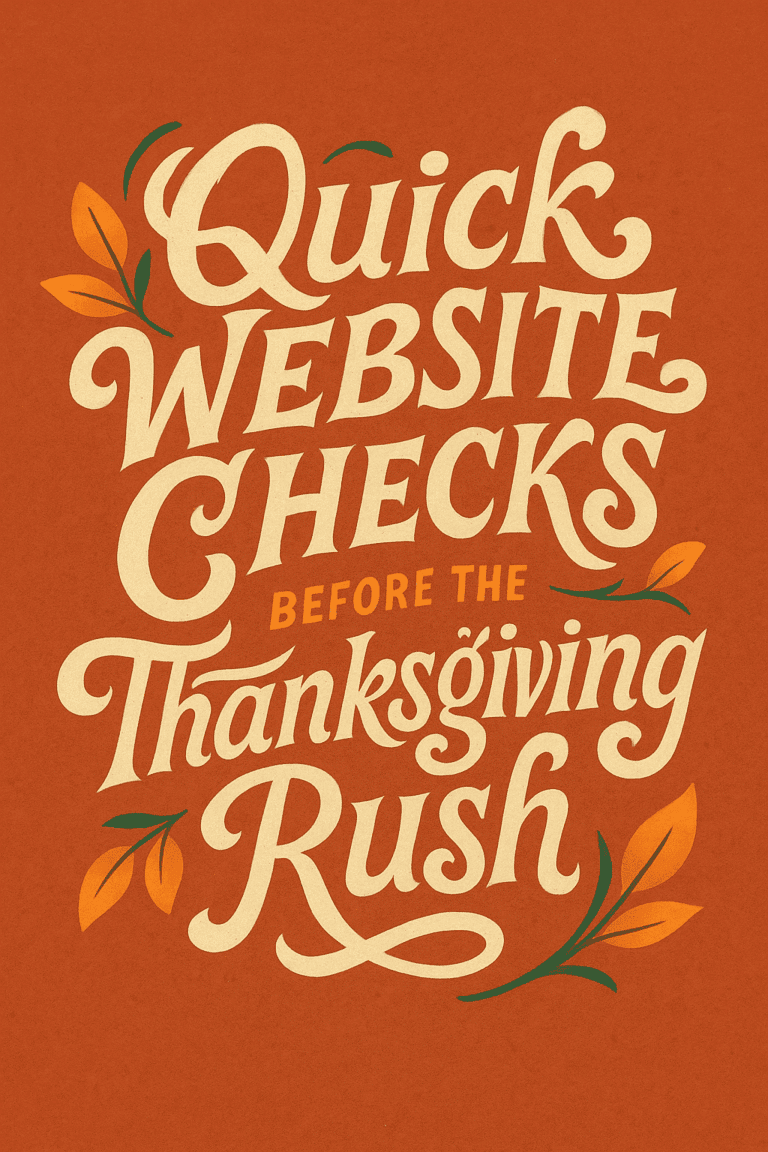
When you think about testing marketing messages, your mind might go straight to email subject lines or social media ads. But there’s a more powerful, often overlooked tool sitting right under your nose: your website.
Your website isn’t just a brochure—it’s a live environment where real people interact with your brand. And that makes it the perfect place to test different messaging ideas before you roll them out in full-scale campaigns.
In this post, we’ll walk through how to turn your website into a testing ground for marketing messaging—from concept to execution—so you can build campaigns based on what your audience actually responds to.
Why Test Messaging on Your Website?
Before diving into how, let’s talk about why your website is ideal for testing:
- Low risk: You’re not spending money to test an idea like you would with ads.
- Real behavior: You’re testing with real visitors, not survey respondents or hypothetical buyers.
- Built-in traffic: If you already get site visits, you don’t have to wait for an audience—you already have one.
- Easy to change: Unlike printed materials or large ad buys, your website is flexible. You can update a headline, banner, or call-to-action in seconds.
Put simply: it’s smarter and more efficient to test messaging with the audience that’s already coming to your site.
1) Choose the Right Pages to Test Messaging
Not every page on your website is a good fit for message testing. You’ll want to focus on high-impact areas where messaging plays a major role in conversion or engagement.
Start with:
- Homepage: Often the first impression, perfect for testing value propositions.
- Service pages: Great for testing benefits-focused language versus technical features.
- Landing pages: Ideal for A/B testing since they’re campaign-specific.
- Contact/About pages: Good for testing tone and brand personality.
The best test pages are ones with:
- Consistent traffic (100+ visits/month minimum)
- A clear call to action (so you can measure conversions)
- A message that plays a big role in visitor decision-making
2) Develop Messaging Variations to Test
You’re not just testing copy—you’re testing ideas. Before you write a single word, think about the underlying concept you want to evaluate.
Test different styles of messaging like:
- Benefit-driven vs. feature-driven
- Emotional appeal vs. logical reasoning
- Friendly tone vs. professional tone
- Customer-centric (“You’ll love…”) vs. brand-centric (“We offer…”)
For example:
Benefit-driven headline:
“Spend Less Time Chasing Leads—Our CRM Does the Work”
Feature-driven headline:
“Advanced Lead Tracking, Auto-Follow-Ups, and CRM Reporting Tools”
Both communicate value. But which resonates with your audience? That’s what testing is for.
3) Use A/B Testing Tools the Right Way
Once you’ve got your variations, it’s time to test them side-by-side. A/B testing (also known as split testing) is the most reliable way to do that.
Tools to consider:
- Google Optimize (sunset in 2023, but if you had it set up, some features remain active)
- VWO (Visual Website Optimizer)
- Optimizely
- Convert
- Elementor Experiments (for WordPress users)
- Thrive Optimize (also for WordPress)
With these tools, you can split traffic to see which message gets better results in terms of:
- Time on page
- Click-through rate (CTR)
- Form submissions
- Sales
- Engagement (scroll depth, video plays, etc.)
Just make sure your traffic is high enough. For statistically significant results, aim for at least 500–1,000 visits per variant.
4) Let Data Guide Your Messaging Direction
It’s tempting to go with the message you like best or the one that “sounds more polished.” But the beauty of testing is that you’re letting actual user behavior decide what works.
Look at:
- Click behavior: Which message drives more clicks on CTAs?
- Conversion rate: Are users more likely to contact you, sign up, or buy with one message over another?
- Engagement: Do they scroll deeper, spend more time, or return more often?
You may find that the “plainspoken” version outperforms your carefully crafted brand language. That’s a clue—real people often want clarity over cleverness.
5) Keep Iterating Based on Results
Just because one message “wins” doesn’t mean your job is done. Your website should be a continuous testing lab. Keep iterating to improve performance even further.
Example roadmap:
- Round 1: Emotional vs. logical headline
- Round 2: Customer-centric vs. brand-centric subheadline
- Round 3: Button text: “Get a Quote” vs. “See Your Savings”
- Round 4: Supporting paragraph with testimonial vs. without
Each of these small tests adds up to a more effective, high-converting website.
6) Use Heatmaps and Session Recordings for Deeper Insight
Not all insights come from A/B testing alone. Tools like Hotjar, Microsoft Clarity, and Crazy Egg let you watch how people interact with your pages.
Use these to identify:
- Which headline keeps people on the page?
- Are people scrolling past your main message?
- Where do they click—or not click?
- Do users pause when reading certain lines?
This qualitative data helps you refine the message by showing how real users behave, not just what they convert on.
7) Tie Website Messaging to Your Broader Campaigns
Once you’ve tested messaging on your website, don’t let the results stay there. Apply what works to other parts of your marketing.
Use validated messaging in:
- Email subject lines and body content
- Google Ads headlines and descriptions
- Social media captions and calls to action
- Print brochures, postcards, and signage
- Sales team scripts and responses
You’re building a library of tested, proven language that you know resonates. This reduces guesswork in future campaigns and makes your whole brand more consistent.
8) Involve Your Sales and Customer Service Teams
Your website shouldn’t operate in a vacuum. The insights you gain from messaging tests are gold for your team members who interact with customers every day.
Share findings like:
- “Customers respond more to this benefit than that feature.”
- “This phrase leads to more quote requests.”
- “This tone keeps people on the page longer.”
Then encourage your team to use that winning language in conversations, emails, and presentations. It creates a smoother experience across all channels.
9) Message Testing Doesn’t Just Mean Headlines
It’s easy to focus only on the big stuff—your H1 headline or main CTA. But supporting copy plays a huge role too.
Consider testing:
- Testimonials: Which ones build the most trust?
- Guarantees: “100% Satisfaction” vs. “30-Day Risk-Free”
- CTA buttons: “Start Now” vs. “Try It Free” vs. “See It In Action”
- Benefit bullets: Does “Save Time” resonate more than “Increase Efficiency”?
Even subtle tweaks can make a noticeable difference in behavior.
10) Avoid These Common Testing Mistakes
Let’s cover a few pitfalls to avoid if you want your message testing to be meaningful:
- Changing too much at once: Keep tests focused so you know what’s actually working.
- Ignoring the data: Just because you like one version better doesn’t mean it’s the best one.
- Testing low-traffic pages: You need a reliable sample size to draw conclusions.
- Stopping too early: Wait until you have enough data to reach statistical significance.
Being disciplined about testing means you get trustworthy, actionable results—not just guesses.
11) Use Your Blog as a Message Testing Sandbox
Don’t underestimate your blog as a testing tool. You can write content around different angles and see what pulls in more readers.
Example test topics for a construction company:
- “Why Homeowners Are Choosing Metal Roofing in 2025”
- vs.
- “The Long-Term Cost Benefits of Metal Roofing”
Watch which gets more traffic, time on page, and shares. Then use that insight to guide messaging on your service pages or in paid campaigns.
12) Track Everything—Even the Small Wins
Not every test will produce a massive lift. But even a 2% increase in click-through rate can mean big revenue gains over time.
Use tracking tools like:
- Google Analytics or GA4
- Tag Manager
- Google Looker Studio for dashboards
- CRM reports for lead conversion tracking
The more you treat your website like a live campaign, the faster you’ll improve overall performance.
13) Use Popups and Banners to Test Messaging Quickly
You don’t always have to change your core website to test messaging. Popups and banners are easy to rotate and can yield fast insights.
Example test:
Popup A:
“Get 10% Off Your First Order – Join Our List”
Popup B:
“Join 8,000+ Happy Customers – Get 10% Off Today”
Test them against each other for sign-up rates, engagement, and bounce rate.
You’ll quickly learn what appeals more to your audience—social proof or immediate incentive.
14) Create a Central Messaging Repository
Once you’ve run a few tests, start collecting your winning phrases, CTAs, and emotional triggers into a messaging guide.
Include:
- Headlines that convert
- Words and phrases to repeat
- Best-performing CTA buttons
- FAQs that people engage with
This gives your team a resource to pull from when creating new campaigns, saving time and ensuring consistency.
Treat Your Website Like a Lab
If you’re spending money on paid ads, SEO, or marketing campaigns, don’t guess at the message. Use your website to experiment and confirm what works first.
You don’t need to run huge, complicated experiments. Even a single headline tweak or revised call-to-action can reveal what resonates—and that knowledge compounds over time.
Start small. Test often. And treat your website like the testing ground it’s meant to be.





